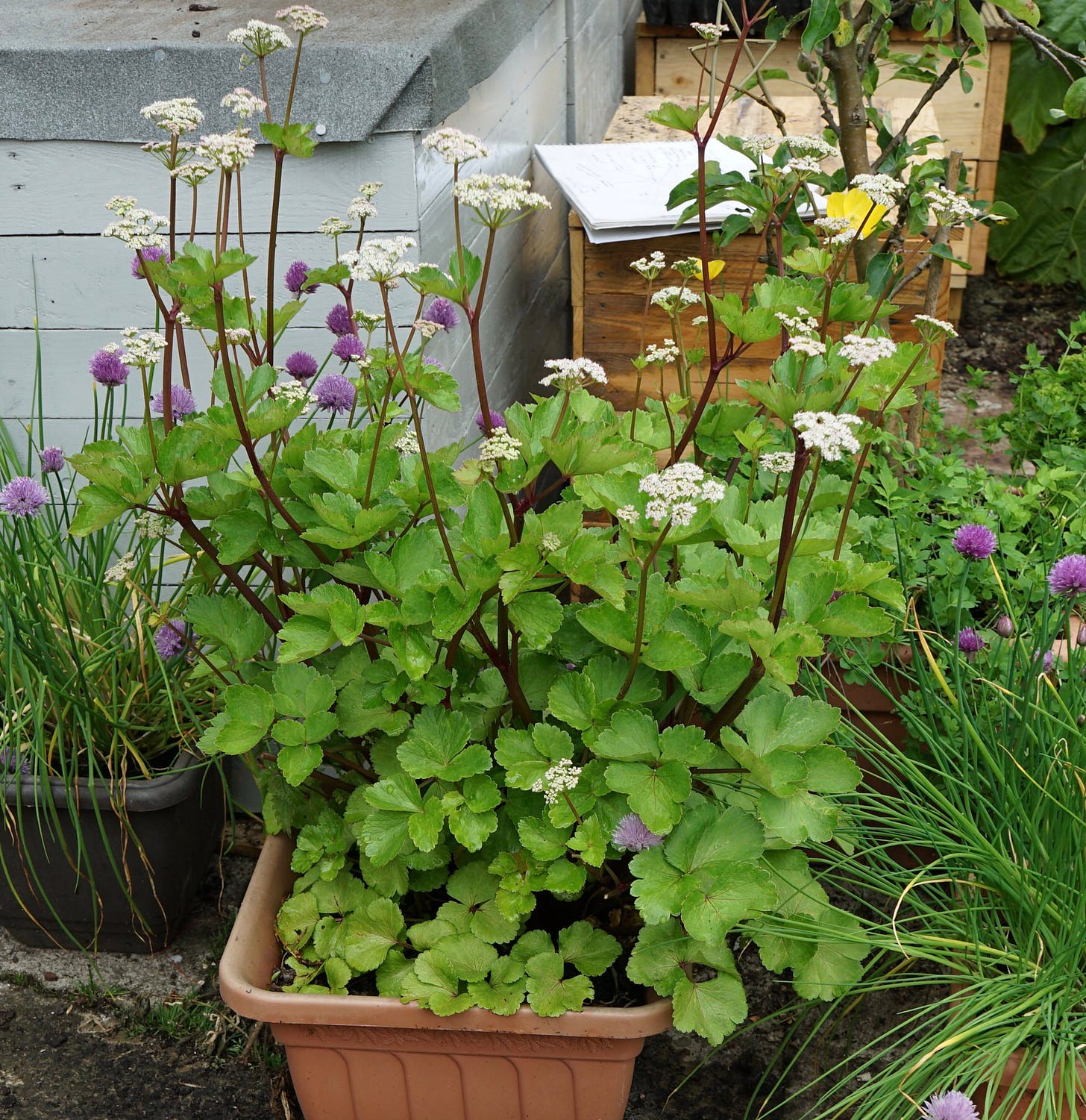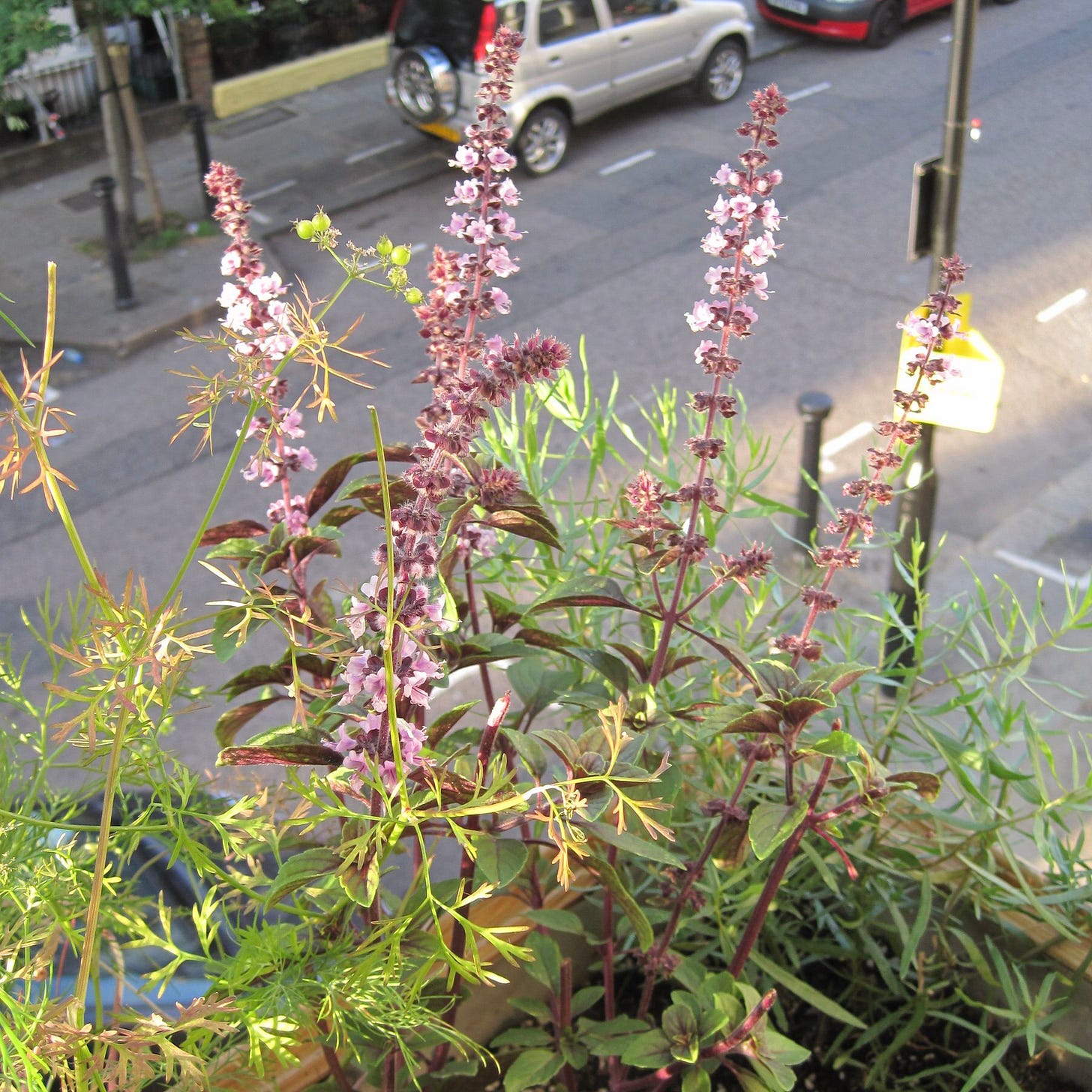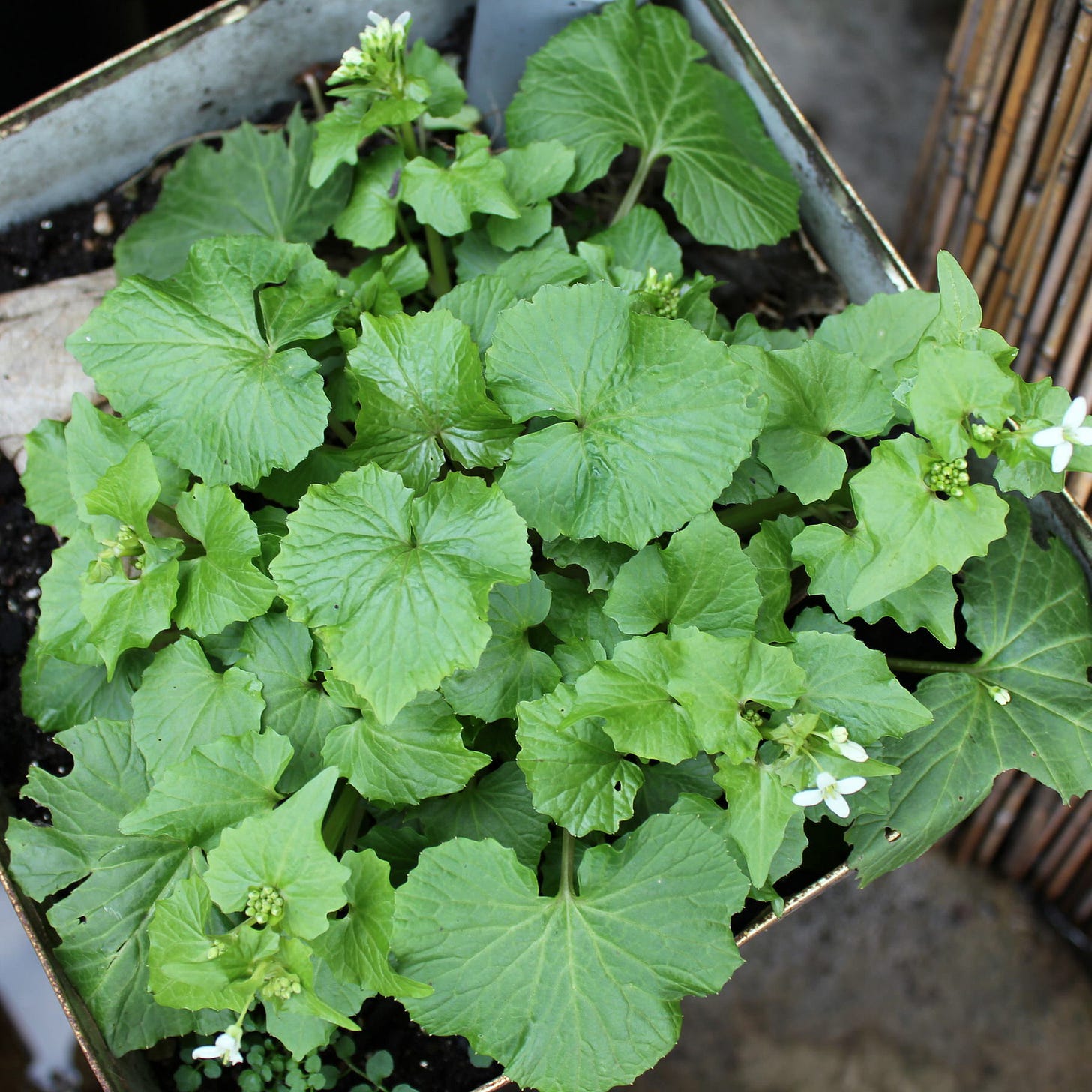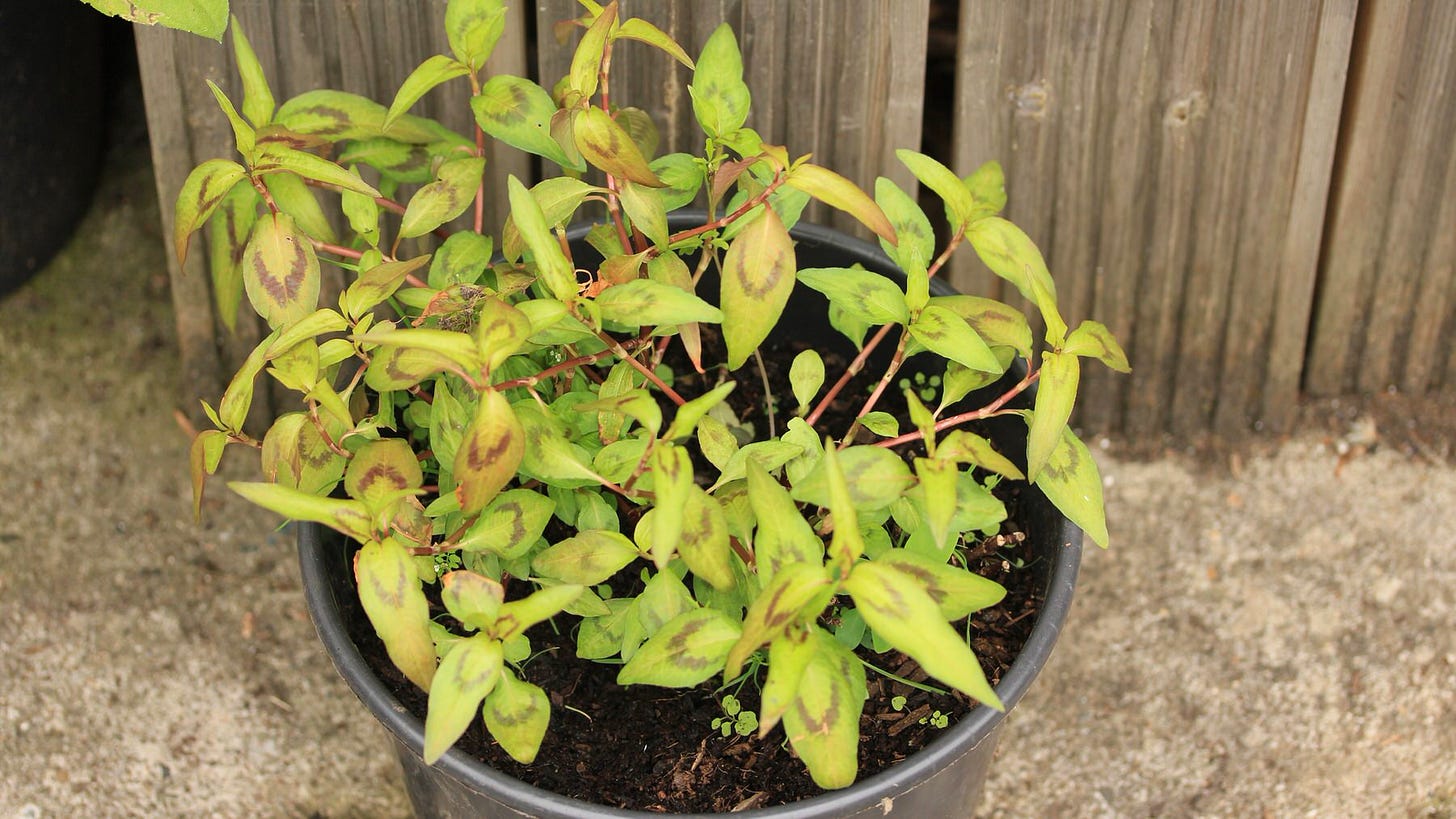Scot's lovage - and other herb growing adventures
Starring wasabi, African purple basil, and Vietnamese coriander
Scot’s lovage, Ligusticum scoticum, is our second Pot to Plate plant this month (In Pot to Plate we grow one of the best container crops each moth and then share simple ways to use our harvests in the kitchen). It’s one of the more unusual plants we will grow this year - and one I hope many of you will find rewarding. [Paid subscribers: scroll to the bottom for your PDF guide on how to grow it].
A lovely surprise when I started ‘serious’ growing in 2009 / 2010 was the wide variety of edible plants that will grow happily in containers but that never appear in the supermarket aisles. I’ve tried lots over the years. Most have been fun to grow and to experiment with in the kitchen even if just for their novelty value.
But only a few of the more unusual plants make it onto our ‘must grow every year’ list. In my experience - and I’d be interested in yours - it’s all too easy to grow a new edible plant, only to find it lingers unpicked, neglected because you’re unsure what to do with it. When space is limited, I only want to grow plants that we make good use of in the kitchen - and / or love for some other reason. I can never resist a few flowers, for example!
Why I grow Scot’s lovage every year
Scot’s lovage is one of the more ‘unusual’ plants that I do always grow. You can use it like celery for adding depth of flavour to stocks (it’s sometimes known as the ‘stock herb’), soups and risottos or finely shredded and in moderation to salads. The flowers and seeds are edible with good flavour, too. As a bonus, it has attractive foliage and pretty white flowers: it’s even sold as an ornamental in some National Trust shops.
It can be picked from May until the first hard frosts, when it dies back to return in spring again the next year. It’s also easy to grow and hard to kill, an attribute that can’t be underestimated in my view! If it can survive on the rugged coastline of Scotland (it’s natural habitat), I guess it can put up with quite a lot.
The flavour of Scot’s lovage is similar to, but also distinct from, common lovage, Levisticum officinale. When I lived in London, the chef Valentine Warner, visited my balcony to film an episode of Love Your Garden for Channel 4. Lovage was his favourite herb, he said, but he wasn’t so impressed by the flavour of my Scot’s lovage. However, we prefer it - I think it has a mellower and less metallic flavour. It is also a far more sensible size for a container (common lovage is a 2 metre tall thug of a plant) and has prettier flowers, too. It is sometimes sold as an ornamental.
I first purchased Scot’s lovage mail order in 2010 from Poyntzfield Herb Nursery in Scotland, a treasure trove of unusual and enticing sounding plants. The nursery specialises in native Scottish herbs but also cultivates plants from all over the world. Their website is an alluring place for any keen edible gardener. As a newbie back then, I got carried away and ordered nine or ten herbs, including some interesting varieties of common herbs like chives. Also, the following unusual herbs, which are examples of plants I’ve enjoyed growing once…. but don’t grow every year.
Blue African basil
This is a perennial variety with pretty purple flower spikes and distinct flavour that I liked but never really got to grips with how to cook with. Bees loved it though.
Wasabi
Yes, Wasabi! Back in 2010, I could hardly believe it was possible to grow this in the UK. It grew quite well on my balcony (photo below), but somehow I contrived to kill it after 18 months. However, we did get to pick some tasty wasabi leaves and flowers , which are similar but gentler in flavour than the root. Very nice.
Wasabi is unusual as it thrives in shade and grows in the cooler times of year. It is certainly possible to grow in a container but my hunch is that it takes practice and skill to get a good yield of the root. And commitment too, as it can take 18 - 24 months to get the first harvestable rhizome.
Vietnamese coriander
This is much easier to grow than common coriander - but it looks and tastes completely different, too. It has a distinctive spicy flavour with some heat. It’s widely used in South East Asian salads, noodle dishes and soups. If you regularly cook Vietnamese, Cambodian or Thai dishes, it is a great option to consider. You can buy the plants online and in a few garden centres, too. It’s also the easiest plant I’ve ever grown from cuttings. (I was once saw plants being pruned at my local garden centre and I rather cheekily asked for some of the prunings which I brought home and grew a whole batch of free plants!).
My partner and I both liked the flavour, but, even though we like it, I’ve never got round to leaning to cook South East Asian food. I also haven’t found easy ways to incorporate the herb into our other everyday cooking. So I don’t grow it every year anymore. I’ll definitely grow it again one year, though. Maybe a contender for Pot to Plate another year - if people are interested?
Discovering what you like to grow
A fun part of Grow Your own is trying new and unusual plants each year. And, if you do it with an open mind, it can be interesting and worthwhile even if you don’t love the end result. You sometimes discover why some plants remain unusual!
Of course, all of us have different palates and different levels of interest in cooking and trying new foods. But, if you are feeling adventurous, Scot’s lovage is a fun one to try. It’s great for adding depth of flavour - and, if nothing else, it is attractive and robust ornamental that is easy and low maintenance to grow.








